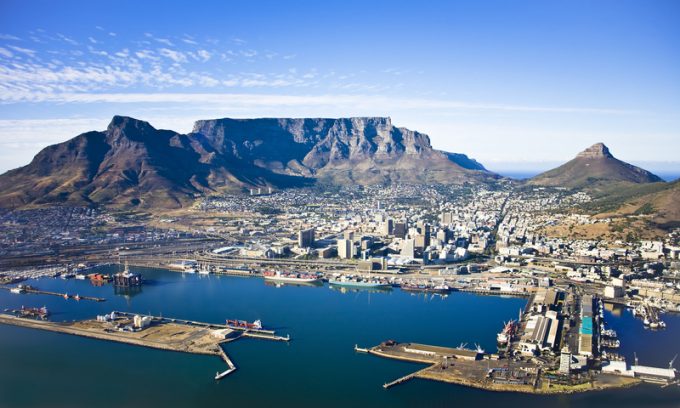Maersk Frankfurt heads for open water as container fire subsides
Maersk Frankfurt, the newbuild box ship that suffered a possible electrical fault and subsequent container ...
TFII: SOLID AS USUALMAERSK: WEAKENINGF: FALLING OFF A CLIFFAAPL: 'BOTTLENECK IN MAINLAND CHINA'AAPL: CHINA TRENDSDHL: GROWTH CAPEXR: ANOTHER SOLID DELIVERYMFT: HERE COMES THE FALLDSV: LOOK AT SCHENKER PERFORMANCEUPS: A WAVE OF DOWNGRADES DSV: BARGAIN BINKNX: EARNINGS OUTODFL: RISING AND FALLING AND THEN RISING
TFII: SOLID AS USUALMAERSK: WEAKENINGF: FALLING OFF A CLIFFAAPL: 'BOTTLENECK IN MAINLAND CHINA'AAPL: CHINA TRENDSDHL: GROWTH CAPEXR: ANOTHER SOLID DELIVERYMFT: HERE COMES THE FALLDSV: LOOK AT SCHENKER PERFORMANCEUPS: A WAVE OF DOWNGRADES DSV: BARGAIN BINKNX: EARNINGS OUTODFL: RISING AND FALLING AND THEN RISING

The plunging value of the South African Rand is predicted to continue pushing down demand for container imports into the country, while weak commodity markets pulled down by China’s declining appetite for raw materials is hurting its export business.
According to a new quarterly trade report from Maersk Line, the only sector of the country’s container trades which saw significant growth last year was fruit exports in reefers, which climbed 7% year-on-year, “which is attributed to strong crop output of apples, pears, grapes and citrus during the year, with grapes showing the strongest growth relative to a poor 2014, coupled with stronger prices in Europe”, said Dirk Hoffmann, Southern Africa managing director at Maersk subsidiary Safmarine.
Whether that continues this year will largely depend on the drought that hit some of its major fruit growing regions during the South African summer, he added.
“The impact will vary widely based on geography, but the Western and Northern Cape are likely to be the hardest hit. Although it is expected that almost all fruit types will be negatively impacted by the drought, the full impact will only be determined in coming months when the fruit is picked,” he said.
While the lack of rain and excessive heat will preoccupy South Africa’s farmers, the other sectors of its economy are in a worse state, with the plummeting value of the Rand leading to a 9% fall in container imports from Asia in the final quarter of 2015. Asia is the source of 55% of the country’s imports.
The company said that the entire economy was affected by declining trade flows in the final quarter of last year – imports were down 4% and exports fell 6%, and Matthew Conroy, Maersk Line’s Southern Africa trade manager said the outlook for 2016 remains depressed.
“We do not expect to see significant container market growth in 2016, and it is likely that the declining trend recorded during the fourth quarter will continue into the first half of 2016. As the Rand remains volatile, imported goods will remain expensive to South African consumers who already have less money to spend.”
At the root of this is China’s slowing demand for raw materials which are sourced from across the southern Africa region, and Mr Conroy suggested the country should invest in industries which add value to raw material production as a way of mitigating this weakness.
“The need for more refinement of commodities has never been greater. Rather than outsourcing raw commodities to other countries, South Africa and the rest of the African continent should look to capitalise on its commodities,” he said.
However, any investment in those areas will take some time to offer returns and Maersk has forecast a decline of 5% in both import and export volumes this year.
Mr Hoffman added: “Overall, the 2016 container market is facing numerous economic obstacles, and therefore growth is not expected. Rather, it is anticipated that the import and export container market will contract by about 5% during the first quarter. Although challenging, the current economic climate does offer exporting opportunities, which various sectors should try and capitalise on.”
One recent fillip could be offered by the recent decision of the South African Reserve Bank to raise interest rates to 7% in an attempt to shore up the Rand’s value. It said that trying to establish price stability in the face of the Rand’s volatility had taken precedence over fears that the increase would hike inflation and dampen growth.
Comment on this article